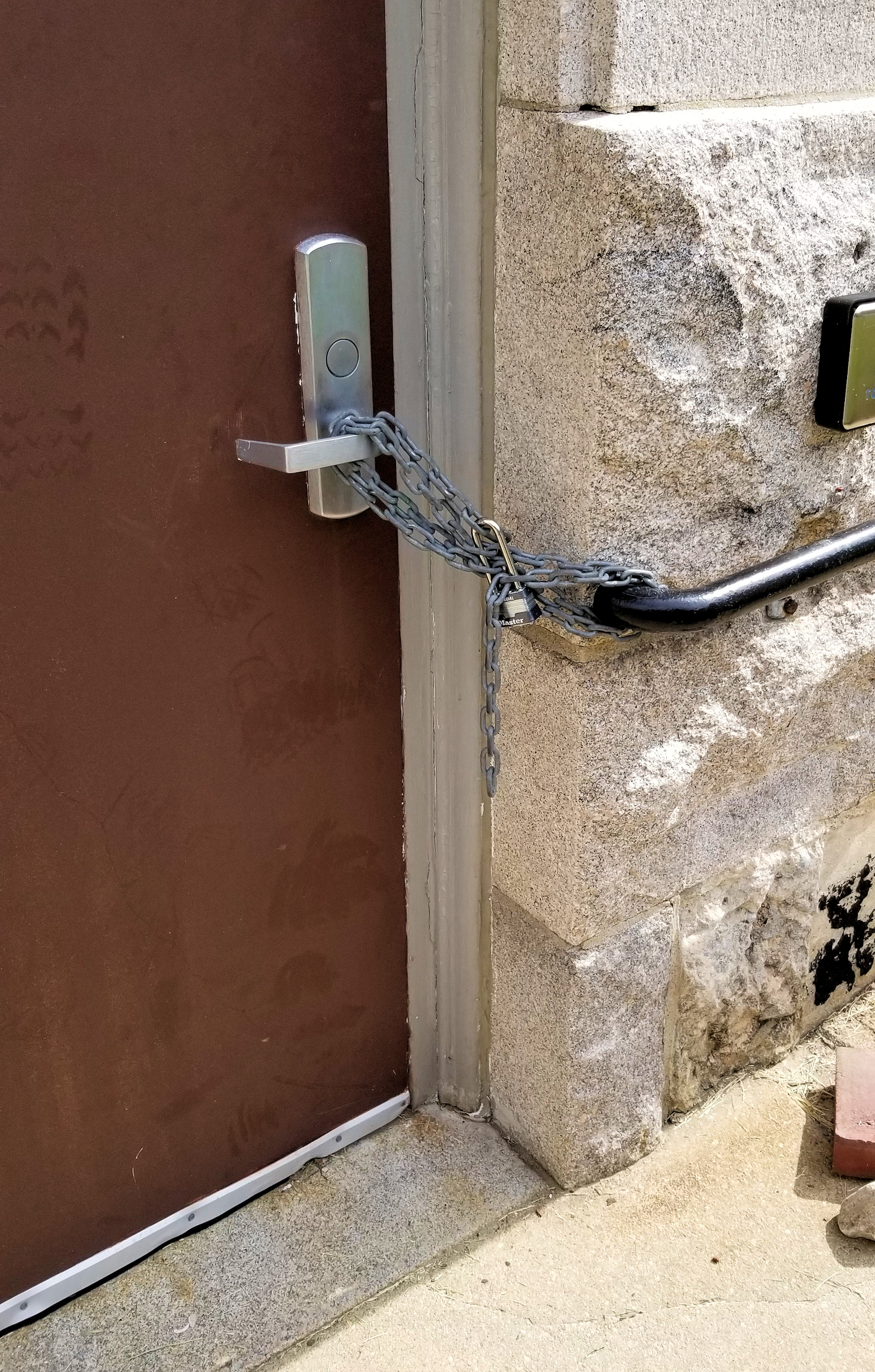Today’s Wordless Wednesday photo shows an after-hours repair on a door that would not lock, as reported by the security department at a large university. Although there are locksmiths on staff, someone came up with their own solution. I don’t even want to think about what could have happened.
You need to login or register to bookmark/favorite this content.






This appears to be a trim for an exit device. Wouldn’t someone be able to open it from the inside and take the chain off?
I would be very surprised if someone trying to exit from the inside could open the door and still have enough slack in the chain to get it off the lever.
– Lori
Lori, I think it fails securing the door and obviously at lifesafety as well.
What does the other side of this door look like? That is a VD exit device trim on the push side of this inswinging door.
I think it’s an outswinging door – the trim on the frame face just makes it look like you’re looking at the push side.
– Lori
And the appears to be a handicap button. You can see the edge of it on the right of the picture
When I supervised the lock shop at a university, the campus police hired students to act as security to lock up the buildings at night. Sometimes they would do some pretty dumb stuff when they couldn’t get a door to secure. Of course, the locksmith on-call was usually called. In the picture, one can see a brick and a stone probably used to prop the door open most times.
Cheap chain and pad lock gave the owner a false sense of security. Almost looks like there’s enough slack in the chain to slip off the handle. If the exit device and trim are functioning as designed, there would be ZERO to gain by using a chain. If there aren’t working correctly, and the door can open, then the chain is pointless.
Looking at further, I’m more likely to be wrong…. LOL
Isn’t the trim clutched anyhow?
Taking a second look, I can now see that this is an out swing door. I also now see that this is a VD trim for a mortise device and not a rim device (cylinder position) Lots of things could cause failure but the chain is never the answer.
YES – good point! So the chain probably does nothing except inhibit egress.
– Lori
I work for a university, and oh do I have stories to tell about door hardware maintenance:
– 200+ seat auditorium with entrances at back of room (typical). There’s an exit-only door at the front of the room near the lectern (also typical) with panic hardware. The exit device was installed too far from the strike, so the latch barely engages the strike. A decent tug on the outside handle, and the door pops open. I have reported this 7 years ago and nothing has been done. It’s pretty much a regular occurrence for exit devices to be installed so poorly either (a) the auxiliary latch doesn’t get pushed in, or (b) the latch barely engages the strike, rendering the lock useless. Facilities refuses to address the issue.
– They installed a privacy mortise lockcase on a bathroom door backwards. Throw the deadbolt on the inside, and the inside lever is locked, forcing you to unlock the deadbolt first, then turn the lever. The outside lever would release the deadbolt and latch simultaneously. Facilities sent electricians (not locksmiths) to fix it. Now both levers lock when the deadbolt is thrown, so still two actions to exit. There’s also no emergency release hole on the outside, so an emergency rescue will involve physically destroying the door and/or lock.
Long story short, you find many facilities departments that simply fail to perform basic maintenance and repairs correctly, primarily because they don’t want to deal with the political fallout of having to pay an actual locksmith–it’s cheaper to pay “laborers” who barely know which way to turn a screwdriver to make a mess out of everything and claim they’re saving money.